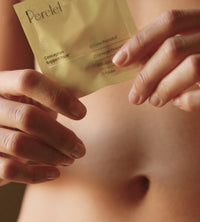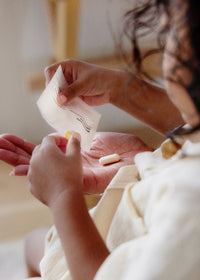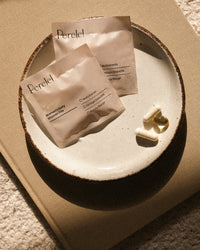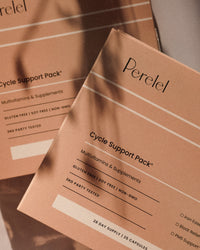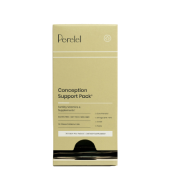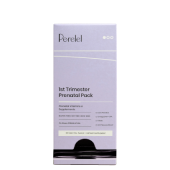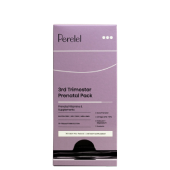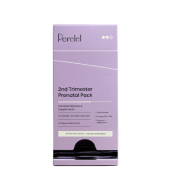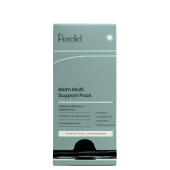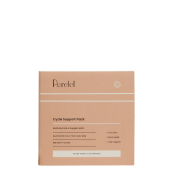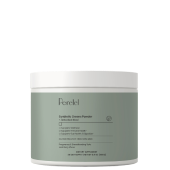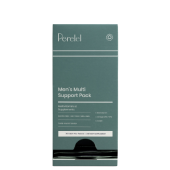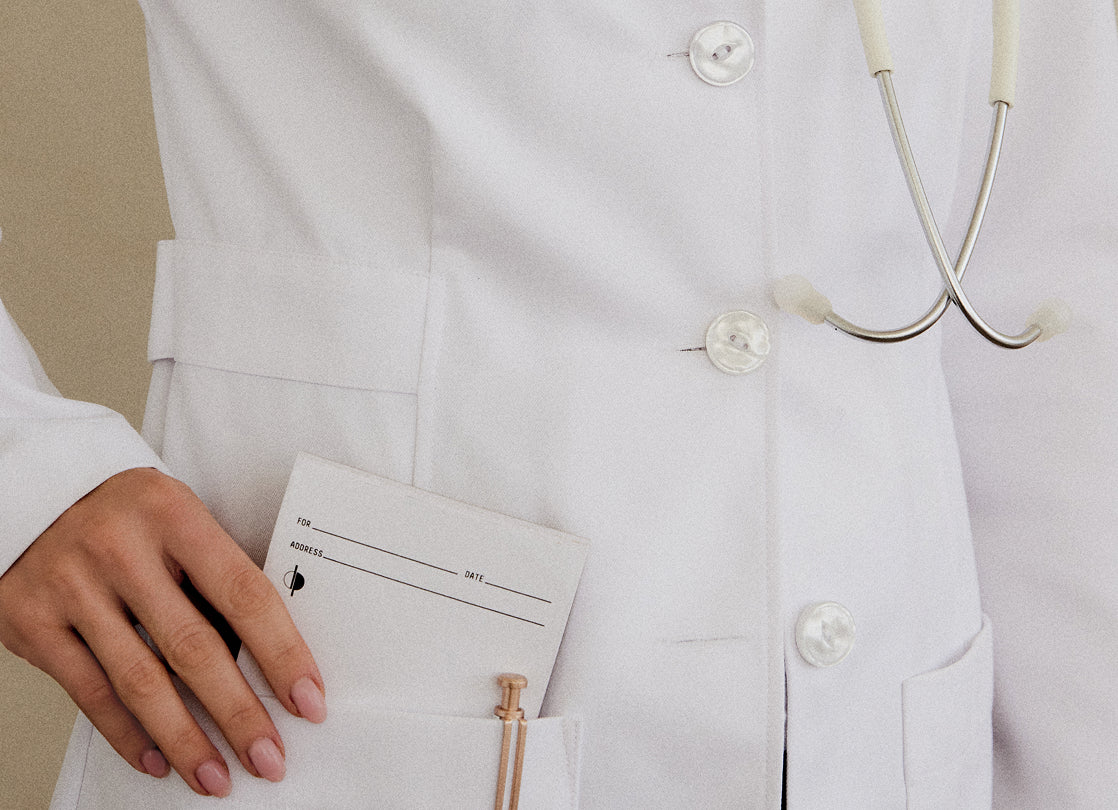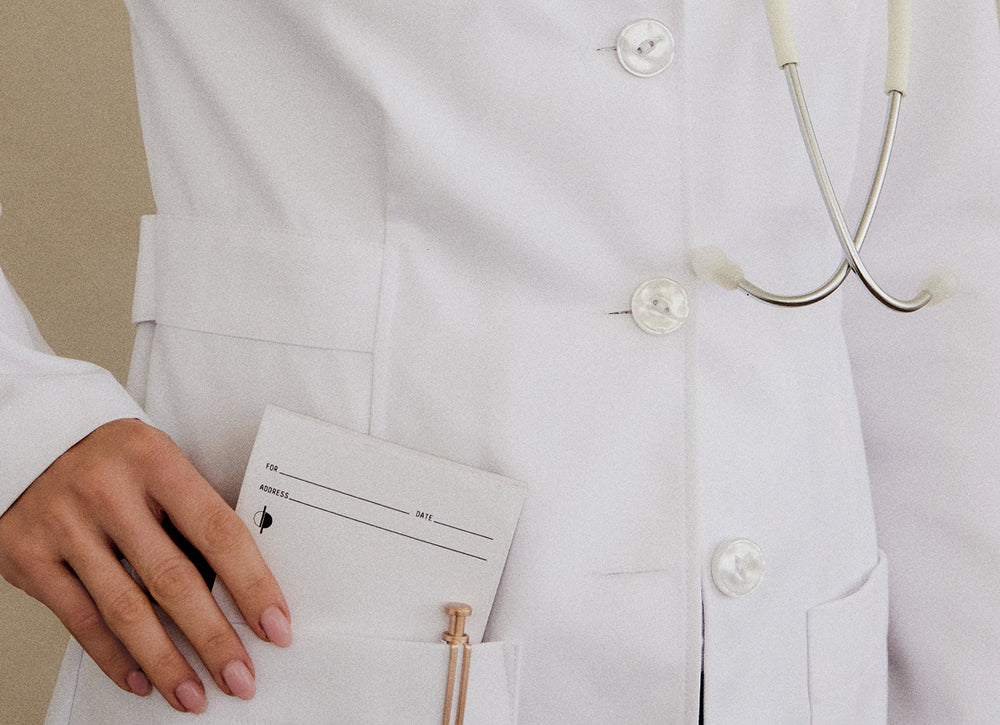Pelvic floor pain is one of those topics that too often gets dismissed, normalized, or brushed under the rug entirely. But here’s the truth: If you’ve ever felt a dull ache in your lower abdomen, a twinge during sex, or pressure that just feels off, you’re not alone—and it’s worth digging a bit deeper to see what might be at play.
Your pelvic floor is a powerful network of muscles that plays a crucial role in everything from bladder control to core strength to sexual function. And just like any other part of your body, it can experience strain, dysfunction, and pain—especially during major hormonal shifts like pregnancy, postpartum, and perimenopause.
Below, let's get into some specifics around pelvic floor pain—and some key habits that can help you find relief.
What is pelvic floor pain?
Pelvic floor pain or pelvic myofascial pain happens when the muscles and connective tissues in the pelvic floor become tight, tense, or tender, leading to discomfort and pain.
Pelvic floor pain can make penetrative sex less pleasurable, make it hard to orgasm, and even reduce sexual desire. It's also linked with lower back pain, digestive discomfort like constipation and bloating, and urinary incontinence. And if you're in a life stage like postpartum or perimenopause, things can feel even more off-kilter than usual.
An important note: If you've been dealing with pain in the pelvic area consistently for six months or more, you may have chronic pelvic pain, or CPP.
What are some causes of chronic pelvic floor pain?
-
Endometriosis: A condition in which tissue that normally lines the uterus grows outside of the uterus.
-
Pelvic inflammatory disease: An infection of the female reproductive organs caused by sexually transmitted infections, such as chlamydia and gonorrhea.
-
Irritable bowel syndrome: A condition that affects the large intestine.
-
Interstitial cystitis: A condition that affects the bladder.
-
Pelvic organ prolapse: A condition in which the pelvic organs, such as the uterus, vagina, bladder, or rectum, move out of place. This can happen after giving birth.
-
Musculoskeletal pain: A type of pain often caused by muscle tension or injury.
-
Psychological factors: Mental health conditions like stress, anxiety, and depression can contribute to CPP.
In some cases, CPP may be caused by a combination of factors.
If you are experiencing chronic pelvic pain, it is important to see a doctor to get a diagnosis and treatment.
How can I get diagnosed with chronic pelvic pain?
CPP is diagnosed using medical history and physical exams. Sometimes tests and imaging studies are done to rule out other conditions.
Some of the tests and imaging studies that may be done include:
-
STI testing for gonorrhea, chlamydia, and trichomonas
-
Urinalysis
-
Imaging studies, such as ultrasound, computed tomography (CT) scan, or magnetic resonance imaging (MRI)
What can I do about pelvic floor pain?
There are treatments for pelvic floor pain that can improve quality of life. You might want to consider:
- Pelvic floor physical therapy: Did you know that there are physical therapists who specialize in pelvic floor support? Pelvic floor physical therapy is a specialized type of therapy that focuses on treating conditions related to the muscles, ligaments, and connective tissues of the pelvic floor.
-
Vaginal stretching exercises and dilators: Vaginal stretching exercises are therapeutic techniques that relax the tightness and tension in the muscles and connective tissues in the pelvic floor.
During these exercises, fingers, dilators, or other tools gently stretch and massage the vaginal and pelvic floor muscles to release tension, increase flexibility, and stimulate blood flow. - Medications for pelvic pain: Gabapentin and tricyclic antidepressants may be prescribed to help address pelvic pain.
-
PBMT: PBMT is a form of light therapy, usually red or near-infrared that stimulates the body's natural healing processes. It’s still being studied as a treatment of myofascial pelvic pain.
It is thought that PBMT works because the cells in your pelvic floor absorb the light energy, which has benefits such as cell growth and repair, reduced inflammation, and increased blood flow, which is helpful for pelvic floor pain. - Lifestyle changes: Your healthcare provider might recommend focusing on regular exercise, a balanced diet, stress management, and better sleep.
Is combining treatments effective?
Combining treatments can be super effective for treating pelvic floor pain.
For example, a study done in 2021, found that folks doing vaginal stretching combined with PBMT have better results, like a greater improvement in their Female Sexual Function Index score (which measures factors like desire, arousal, lubrication, orgasm, satisfaction, and pain), less pain, and overall quality of life than people who just did vaginal stretching exercises.
How else can I manage the pain?
Some additional tips for managing pelvic pain are:
-
Keep a pain diary: Tracking your pain can help you to identify triggers (e.g. your period) and patterns. This information can be helpful to your doctor when developing a treatment plan.
-
Learn relaxation techniques: Relaxation techniques, such as yoga, meditation, and deep breathing, can help to reduce stress and pain.
-
Get support: Talking to a therapist or counselor can help you to cope with the emotional and psychological effects of CPP.
-
Join a support group: Talking to other women experiencing CPP can provide you with support and understanding.
How do I talk about this to my doctor?
A few things you might say to your doctor:
- "Based on my symptoms, do you think I could benefit from combining different treatment options? If so, which ones do you recommend?"
- "I've heard about a newer treatment option called photobiomodulation therapy— would this be an option for me?"
- "Can you give me some guidance on how to do vaginal stretching exercises safely and effectively?"
- "Will I need a referral to get pelvic floor physical therapy or PBMT?"
-
"How can I track my progress and know the treatments are working?"
Takeaways
Experiencing pelvic floor pain isn't uncommon, particularly during certain chapters in a woman's life, like postpartum and perimenopause. If you're feeling "off," it's best to work with your healthcare provider to seek treatment—and try some pelvic floor exercises at home.
Sign up to receive doctor-backed, stage-specific content in your inbox each week.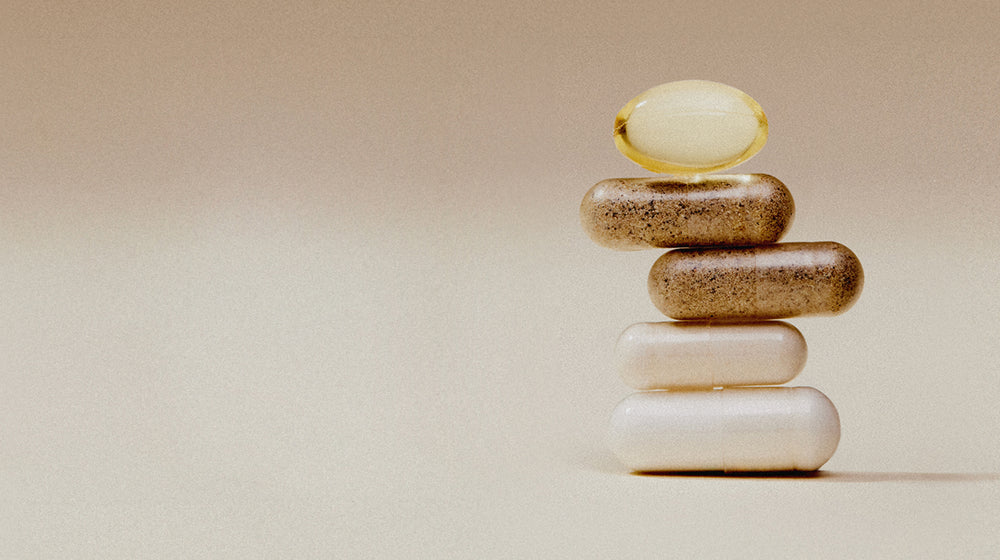
theFolio in Your Inbox
This article is for informational purposes only. It is not, nor is it intended to be, a substitute for professional medical advice, diagnosis, or treatment and we recommend that you always consult with your healthcare provider. To the extent that this article features the advice of physicians or medical practitioners, the views expressed are the views of the cited expert and do not necessarily represent the views of Perelel.
Resources:
- Effect of Vaginal Stretching and Photobiomodulation Therapy on Sexual Function in Women with Pelvic Floor Myofascial Pain - A Randomized Clinical Trial. The Journal of Sexual Medicine, Volume 19, Issue 1, January 2022, Pages 98–105, https://pubmed.ncbi.nlm.nih.gov/34955173/. 2021.10.008. Claudia Pignatti Frederice, Ticiana Aparecida Alves de Mira, PhD, Helymar Costa Machado, MSc, Luiz Gustavo Oliveira Brito, MD, PhD, Cássia R.T. Juliato, MD, PhD
- UpToDate. (n.d.). Mysofascial Pelvic Pain Treatment in Females.
- Lamvu G, Carrillo J, Ouyang C, Rapkin A. Chronic Pelvic Pain in Women: A Review. JAMA. 2021 Jun 15;325(23):2381-2391. doi: 10.1001/jama.2021.2631. PMID: 34128995.



